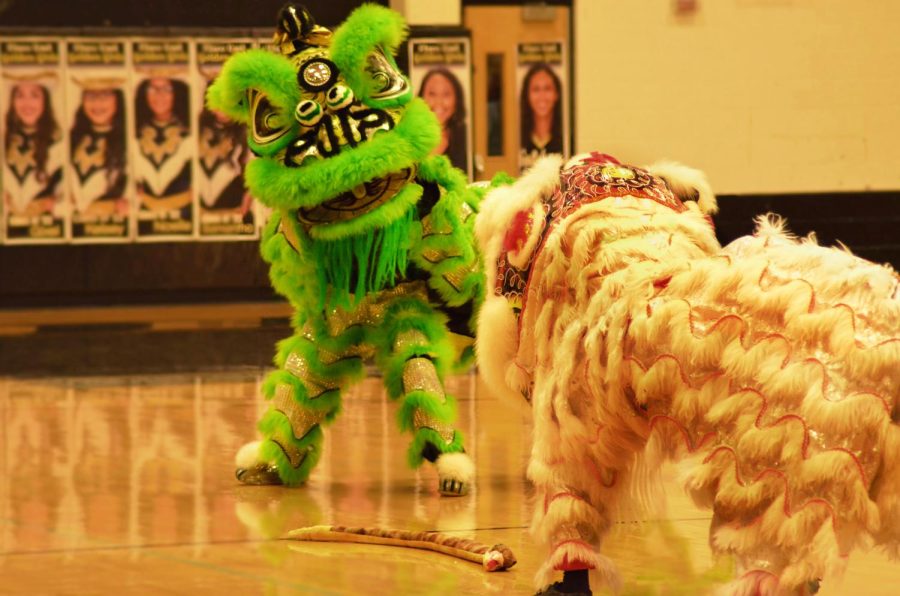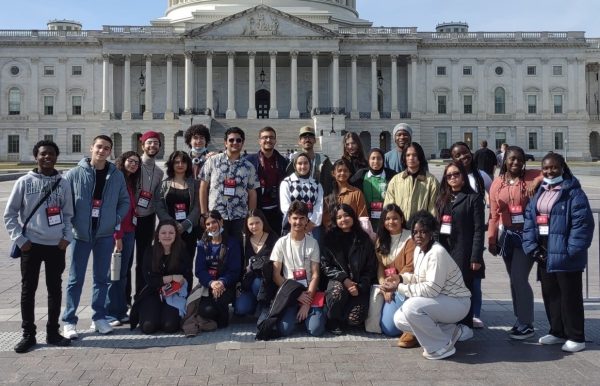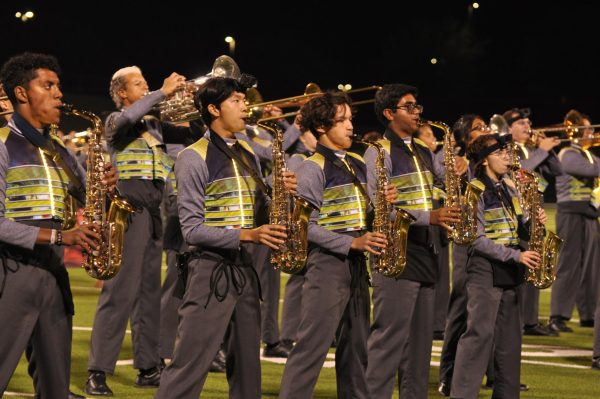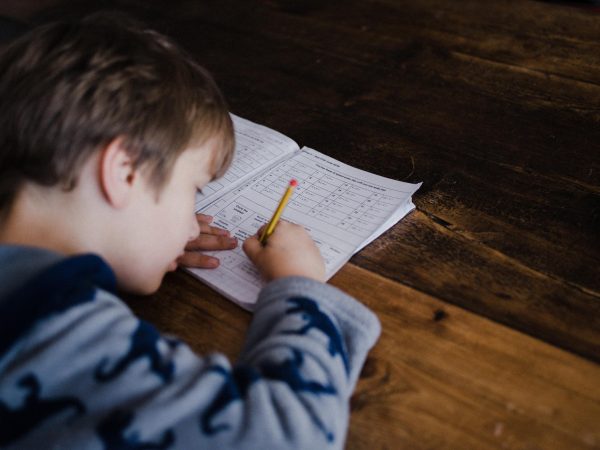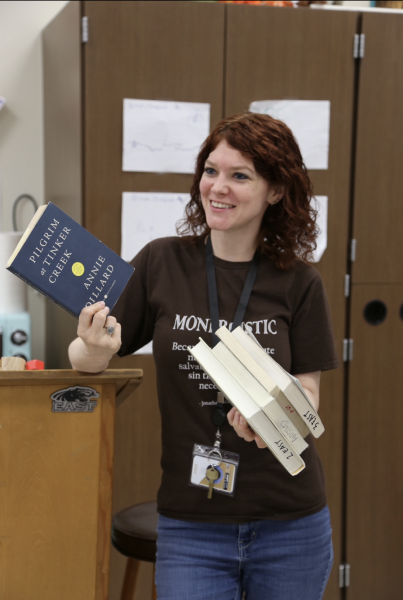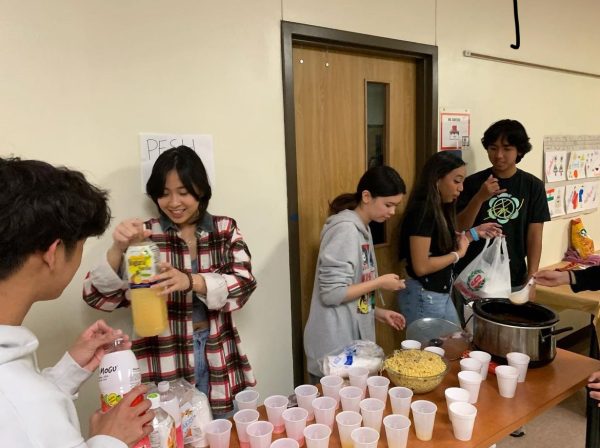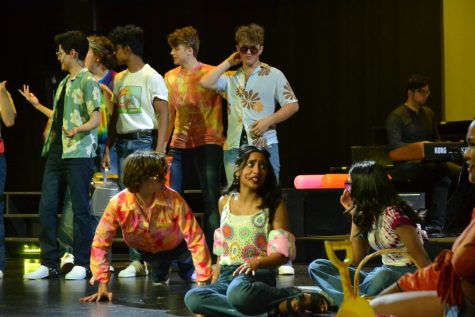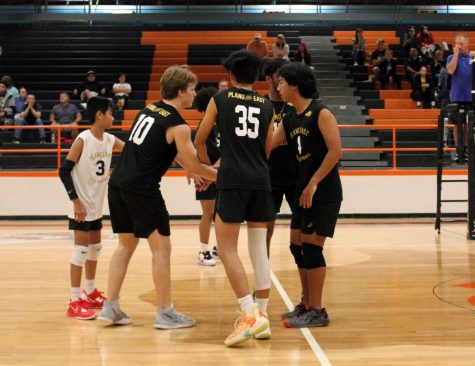Driving Diversity with Lion Dance Club
Lion dancers battling a snake during their performance on Jan. 27. The snake is a popular choice to play as an obstacle in blocking good fortune. The routine, also known as Snake Cheng, consists of the lions acting out combat-like movements until the enemy is dead.
As the loud sounds of cymbals crashing, drums beating and gongs ringing excite the gym, the dancers under colorful sequin costumes begin to move, bringing the lion to life. With the tradition rooted in many Asian cultures, the art of lion dancing is performed during important celebrations like birthdays, weddings, holidays, and most notably, Lunar New Year.
The Lion Dance club initiated their first school performance of the year at a pep rally Oct. 22. Dance teacher and sponsor Mackenzie McCall recalls the occasion with a positive memory.
“I think it’s so entertaining and very different from what I teach and what I’ve known with my dance background,” McCall said. “The whole crowd just loved them. It really showed our diversity and everyone was represented at the pep rally.”
Branching off from their parent group, the JL Sports Association, the club opens its arms to any new members with any or no prior knowledge of the dance style. Older members like senior president Nicholas Pham train newer ones by initially teaching them the beat patterns of the dance. Gradually, members begin to refine their movements while also practicing playing the instruments for usually two or more hours a week.
“Once you get that beat pattern down, your movements are basically in-sync with those beats and you just flow with it,” Pham said. “To be honest, it’s not that hard to learn, it’s just hard to master to make it look good.”
Practice sessions usually occur whenever a majority of the team is available, but are almost entirely student-led. McCall explains that her job is to mainly find a location for the team to practice, but the rest of the group’s activities are organized by the students. Due to COVID-19, the club hasn’t been able to meet as frequently, but leaders continue to post practice videos for members to reference on their Google Classroom. Leaders such as senior vice president Deaven Tran and senior Olivia Neuner help arrange lessons, schedule new events and communicate logistics with McCall.
“They’re student leaders and have a lot of knowledge and are very advanced,” McCall said. “I don’t really know how to do any of [the dances], but they’ve been teaching [new members] a lot of skills. I appreciate the fact that they accept anyone that wants to take part in [the club] and they’re really good at placing everyone where their skill level is.”
While the club performs a culture known to many students, for Neuner, her time in the club allowed her to expand her skills and knowledge about the art form.
“I never knew anything about lion dancing before, so I got to learn so much about the history and culture behind it,” Neuner said. “There’s just so much hard work that makes the lion really come to life and seem so realistic and a lot of details [being put] into it. It’s a way of friendship while also experiencing something new that I’ve never thought I would’ve before.”
With his longer history with lion dancing, Pham shares similar sentiments to his peers. Starting in the first grade, Pham joined a group at his temple. With their lively motions and clamorous melodies, Pham fell in love with the spirited enthusiasm the lion dancers brought into the environment. Later in his sophomore year, he rekindled his interest in the dance and eventually helped in the formation of the current Lion Dance club.
“I’ll probably still be dancing until I get too busy with college,” Pham said. “I’m pretty passionate about lion dance so being a part of this club just helps reach out and spread this art form to people who haven’t seen it before or who want to connect to it but don’t know how.”



